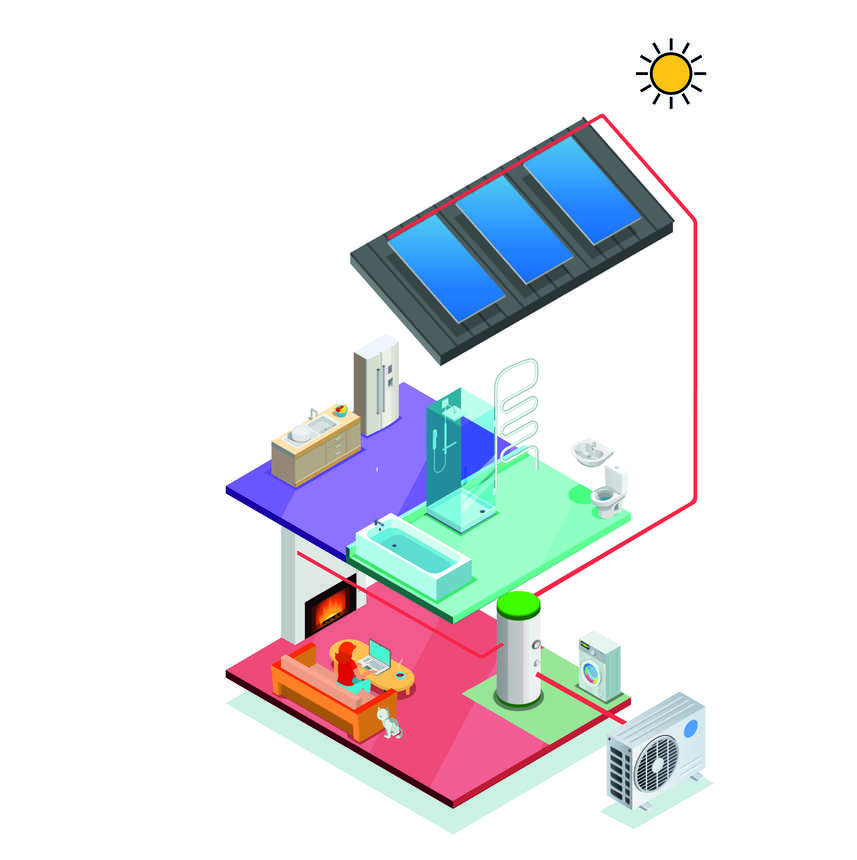Ventilation for stoves and fireplaces
Both a stove and a fireplace need air to work properly - the fuel needs a supply of oxygen to burn after all. When you open the door of the stove then air also rushes up the chimney because you've made the opening to the chimney much bigger by opening the door. For a fireplace this rush of air is going on all the time - which is a main reason that they are so inefficient (sometimes actually cooling your house down, not heating it as a result). All the more reason to swap to an efficient stove.
Ventilation for stoves
Stoves require less air than a fireplace to function, but they do still need some. Without this air supply the stove will smoke as there will not be a movement of air through the chimney to carry the smoke away. This is annoying and potentially dangerous.
Building regulations recommend that, depending on how airtight your home is, that the room with your stove in should have a permanently open vent to supply the air that the stove needs. Now enough air may leak in to the room already, but for newer buildings or where older buildings have been upgraded a permanent vent may be needed.
If you are fitting a vent to the room then it's a good idea to fit it near to the stove so that the cold air coming into the house does not have to travel so far. We can supply a stove ventilator which can easily be fitted with a 5 inch core drill. It has a series of baffles to reduce wind noise, a louvered grille for inside and a hood to prevent rain entry outside.
BS 8303 was recently updated and so we now finally have guidance and a legal way to fit a stove with a direct air duct but no vent to the room. In addition to that I have come up with a gizmo called AirSmart which opens a sealed vent to the room whenever you open the door of your stove. Both these developments are ideal for passiv haus and other low energy, well sealed buildings. We design lots of wood heating systems for passiv and low energy homes so do get in touch if you would like us to get involved with your project.
Read more about this in our Building regulations subsection - stove room ventilation page
Ventilation for fireplaces
Fireplaces require a lot more air than a stove. This is because of the large opening size of the fireplace. The maximum opening size of a stove (the firebox opening when the stove doors are open) is small compared to the aperture of even a small fireplace. Inadequate ventilation is a common cause of a smoking fireplace. If your fireplace has a throat (where the chimney opening narrows above the fire) then you need to provide permanently open vent(s) of at least 50% of the cross sectional area of the chimney at the throat. If the fireplace does not have a throat then you need to provide permanently open vent(s) of at least 50% of the cross sectional area of the flue.
Fireplaces need a LOT of air, to give you an idea it's probably of the order of 40lts of air a second going up your chimney. Bear in mind that that is air that you have probably paid to heat. An open fire is definitely cosy, but it's also very inefficient and can actually end up having the overall effect of cooling down your house, even though it might feel warm sat near it.
My advice, if you just love the feel of an open fire, is to consider something like a Fondis inset stove with an up and down sliding door. You can have a traditional fire surround so it looks like a fireplace and you can burn it in with the door open in 'open fire mode', and then shut the door and it will burn efficiently again, produce decent amounts of heat to warm your home and not be sucking in that 40lt/second rush of cold air into your house.



















































